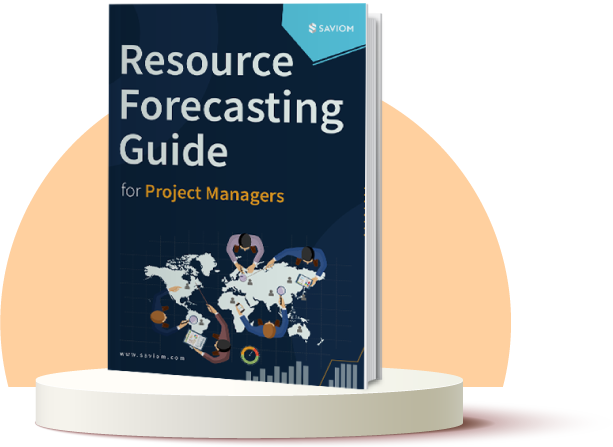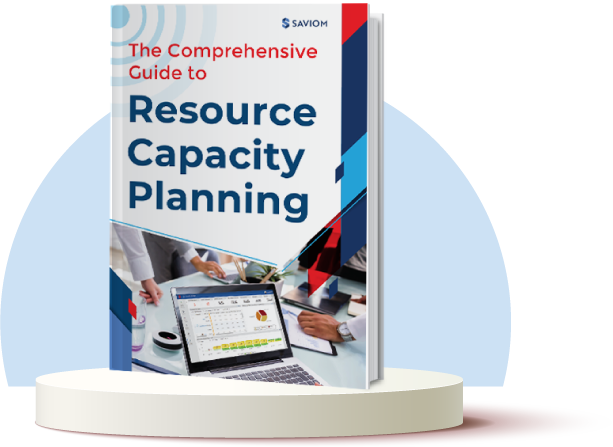Diversification and the ever-growing consumer demand have led companies to expand their horizons and enter new business realms. Moreover, increased profit margins and the advent of digitization have fueled this expansion to a greater scale. Firms invest in developing new products and forming a full-fledged portfolio that comprises all the products and services.
However, as the number of products increases in the portfolio, it gets challenging to keep a tab on every product, its contribution to the market share and company’s growth, and so on.
To combat these challenges, businesses are now resorting to a systematic approach in managing their portfolio, known as product portfolio management.
This article is a comprehensive guide that takes you through all the basic product portfolio management concepts and tips to formulate a full-proof strategy.
Beginning with defining the term,
Definition of Product Portfolio Management (PPM)
Product portfolio management is a definitive process of analyzing and assessing each product and its current level of success. It also involves identifying risks and future opportunities, streamlining resource allocation based on product success and priority, and ultimately aligning these products with the business’s long-term strategic goals.
This methodology enables product managers and stakeholders to constantly review their products, improve them based on evolving consumer demands, add more products or services and streamline the product execution based on resource capacity. These processes cumulatively result in an increased Return on Investment, thereby enhancing the business’s top line.
Given the definition and processes involved in PPM, let us now understand what its goals and objectives are,
Goals and objective of PPM
Not every product or service offered by your firm does well in the market or aligns with your business strategy. Thus, it becomes imperative to diligently assess these products and take the right call of either upgrading them or taking them out of the portfolio altogether. Otherwise, the resources allocated to these underperforming products will also be wasting their time, effort, and expertise.
The primary objective of product portfolio management is to minimize investments in lagging products and bolster the development of the ones that have breakthrough potential. This approach not only impacts the top line but also ascertains that resources are working on value-adding assignments.
Here is the list of motives and goals behind setting up a systematic PPM process:
- Align the products (both present and pipelined) with the organization’s mission and vision
- Assess and analyze the place of products in the market and their impact on the internal business environment.
- Eliminate the low-profitable and the ones not adding value from the portfolio
- Assign and schedule resources to profit-yielding and novel, innovative products to help them upskill and perform better.
- Review and focus on improving the products’ or services’ performance to keep them in-line with the ongoing demands.
- Create a transparent work-environment and keep every stakeholder and decision-maker in the loop.
Now that the objective behind forming a product portfolio strategy is clear let’s understand its benefits one can leverage.
Read More: A Cheatsheet to achieve a Project Manager’s career goals & objectives
How does PPM benefit businesses?
Forming a workflow for any business-related issue provides a plethora of benefits. PPM is one such strategy that proves beneficial to your firm in multiple ways. From a strategic standpoint to enhancing the employee experience, PPM caters to all.
Below is a curated-list of advantages offered by PPM. Product managers will be able to:
- Meet the strategic or long-term goals faster with intuitive market insights and quick product development.
- Prioritize and organize the products based on their market value and consumer demand.
- Streamline Research and Development with the best opportunities to upscale the business with a data-driven approach.
- Bring novel and unique products and services to the market ahead of the competitors with forecasting ability.
- Form a contingency plan in advance to deal with the market uncertainties.
- Improve overall efficiency and performance of products to drive the competitive edge.
- Maximize employee productivity and team engagement by enabling uninterrupted, inter-departmental collaboration
- Improve operational prowess with smart and competent resource planning and allocation and a start-to-end systematic management process.
Given the benefits, it is evident that PPM has a lot to offer to the business. However, the challenge is to get the right products on deck and form a full-proof management strategy. The following section discusses some tried and tested tips to help you get your product portfolio strategy on-point.
Read More: Top Ten Business Benefits of Resource Management
Let’s understand each one in detail,
The crucial steps in Product Portfolio Management
Product Portfolio analysis
The first step in any management strategy, be it product or project, is to evaluate if the assignment you are planning to take up aligns with your short and long-term goals. Because, if not, you are investing your financial resources, your workforce, and their efforts in a futile area with no ROI.
Product Portfolio analysis is the very first step in the PPM strategy. It facilitates managers to categorize the products into different sections and implement the right course of action.
This analysis can be carried out using two different models:
- BCG (Boston Consulting Group) Matrix
- McKinsey Matrix.
Beginning with the BCG Matrix,
-
-
BCG (Boston Consulting Group) Matrix
It is one of the most popular models that analyzes and measures the product based on market share and market growth. Here, market share signifies the share percentage the product holds in the business compared to the competitors. In contrast, market growth considers the product scope based on the industry as a whole irrespective of the competitor. After bifurcating the products into these two sections on the X-Y axis, managers can analyze its potential profitability in the long-run.
After placing the product in the growth or share axis, these products are further separated into four major categories: Cash Cows, Stars, Question Marks, and Dogs.
- Cash Cows
- Cash cows
-
- are mainly the firm’s
legacy or groundbreaking products
-
- that
hold the most market share
-
- but have
low growth potential
-
- . These products are the
most profitable ones
-
- . Firms should sell these products to gain good profit margins and
get a good investment cushion
- to diversify the portfolio.
-
-
-
- Stars
When the product has a high market share and stands tall on the market growth quadrant, it is then termed a star product. Decision-makers and stakeholders must significantly invest in these products as they have high market potential.
- Stars
-
- Question Marks
As the name suggests, question marks are the products left to study and analyze after future results. Their growth rate is high, but they have a low market share. These are generally the new products introduced in the market, and consumers are enthused to try them. They can either become a cash cow or dogs in the long run.
- Question Marks
- Dogs
The products that neither have a stand-in market share nor growth are categorized as dogs. Managers are advised to discontinue these products’ investments as they do not bring any ROI and lead to the draining of resources.
Read More: 5 Project Selection Criteria to Structure the PMO
-
GE/ McKinsey Matrix
General Electric and McKinsey consulting adapted the BCG matrix and tailored it to suit their business needs. Instead of market share and growth, the matrix model uses “Industry Attractiveness” and “Business Unit Strength” to anchor its X-Y matrix.
The Business-unit or competitive strength:- the products are analyzed and evaluated based on their market share, competitive advantage, brand value, and average profitability.
Industry Attractiveness:- This scale is purely based on potential growth rate (relative to the overall economic growth) and market saturation.
And instead of just ranking them in the ‘high’ and ‘low’ category, they give these products ‘high,’ ‘medium,’ and ‘low’ ratings. This expansion of the BCG matrix allows managers to get a broader view of their products and strengthens their decision-making.
Like the BCG matrix scale, the products with high industry attractiveness and high competitive strength should receive the maximum investment. On the other hand, the product should be studied carefully for potential improvements when they fall in the medium range in both categories. Finally, the products are eligible for divestment when they have low industry attractiveness and competitive strength.
These matrices allow the product managers to make the right investment decision and align their business goals with each product.
Product Lifecycle stage analysis
The next step after extensive categorization is to find out where each product stands in the product life cycle. The comprehensive view of the product and its stance in the life cycle enables managers to prioritize and eventually decide the right course of action.
The product life cycle encompasses the following stages:
Introduction
When a product is still in the planning phase or the pre-sales phase, it lies in the product life cycle’s introduction stage. Drawing the comparison with the BCG matrix, it is safe to say that these products are characterized as the ‘question marks’ of the portfolio. The products have just permeated the industry and left for further studies after the market response.
According to renowned professor Clayton Christensen from Harvard Business School, 95% of the market products fail every year.
Thus, the product managers must diligently study the market, evolving demands, and other parameters before launching the new service or product.
Growth
It is the most rewarding phase for every resource involved in the product development, marketing, and sales process. After getting a platform in the market, these products experience exponential growth where the sales numbers and ROIs are more significant.
However, this is just half the battle won. Product managers, the marketing, and the sales team now have to gear up to push the sales and ensure that these services or products enter from the ‘stars’ to the ‘cash cow’ stage. You can either become a market leader, or the sales will go spiraling down.
Maturity
If your product successfully crosses the growth stage, the next step will all be about planning and improvisation. In simple terms, the product managers have to build a strategy around enhancing the customer base and upgrade the product to lead the market in the long haul.
For example, traditional spreadsheets or half-baked management solutions are obsolete due to decreased market demand. The software industry strives to stay afloat by keeping up with the novel market trends, upgrading their management tools to a holistic solution, and amplifying their consumer reach.
Decline
Taking the same instance, if a software firm fails to walk along with these emerging trends and the evolving consumer needs, there will be a steep declination in sales. These products that cannot thrive in the fierce competition eventually enter the ‘decline’ stage.
It is the time of making a hard decision. Managers have to take a call and free up the money invested in this product to develop a new one and keep going. It will allow them to maintain the competitive edge with newer services and products and sustain the inevitable market volatility.
Once the products are placed in the appropriate stages, the next and the most crucial step is to formulate an action plan. This plan will ensure that neither the company’s financials nor the workforce’s efforts are wasted in a futile area.
After all, efficient management is all about doing more within existing resource constraints.
Read More: Resource Management: A Comprehensive Handbook for Project Managers
Resource Allocation
Whether your firm is involved in software services or retail products, the development process is an amalgamation of several small steps. For instance, software development starts with designing, forming a blueprint, developing the software, testing, and debugging. Each of these steps requires employees with niche skills and expertise in the specific field.
Based on the product, its tasks, and the lifecycle stage, managers have to identify and schedule competent resources keeping other resource attributes in mind. An important thing to note here is that a star product may demand a highly-specialized resource that can upgrade and improve the product to push it to the cash-cow category. Similarly, the critical resources booked to the products in the declining phase will have to be mobilized to question marks, stars, or cash cows.
Efficient scheduling can be a breeze with an advanced resource scheduling tool that allows you to find the right resource across geographical boundaries. Managers have the liberty to filter out the resources based on their requirements like specific cost rate, location, profile, roles, etc.
Read More: What is Resource Scheduling? How to Schedule Resources for Projects Efficiently?
Forming the Product Portfolio Roadmap
A product portfolio is only built stronger with stakeholders’ active participation (investors and clients), resources, and managers. It is therefore imperative to strengthen the team and ensure that everyone is on the same page. However, giving real-time updates is a challenge when everyone is dispersed across the globe. Thus, forming a document on a unified platform that entails all the nitty-gritty of each product is essential.
A product portfolio roadmap (a project manager’s work breakdown structure) is one such document that logs every detail from the product and its categorization to the scope and resource plan. This roadmap encourages team collaboration, empowers you to solve complex problems in a coalition, makes investment decisions mutually, and meets the product’s cross-functional needs in a matrix organization.
New Product Development and acquisitions
Every firm aims to scale-up and outstand in the ever-competitive business industry. Limiting one’s firm to the existing portfolio of products may restrict you from leveraging the growing market.
New Product Development (NPD), as a part of your product portfolio strategy, is that missing piece of the jigsaw puzzle. It provides immense growth opportunities and allows you to diversify.
Along with NPD, looking out for potential acquisitions that can add value and escalate your clientele is equally important. The acquisition is an extensive process that involves searching for the right opportunity, engaging and collaborating with potential organizations, performing a detailed background check, and finally, after consensus integrating the product into your portfolio. To ensure seamless execution of the acquisitions, the product portfolio team must work cohesively to attain tangible results.
Using a product portfolio management tool, managers can evaluate every scenario by simulating critical variables. It is known as the ‘what-if’ analysis. It gives better clarity on potential ROIs, timelines, resource requirements, resourcing costs, and others and lets you select the best scenario. NPD and acquisitions also give you the leeway to innovate and generate path-breaking products that will, in turn, make a mark in the market.
All these steps, when followed methodically, will facilitate you to make your product portfolio management strategy right and enhance business efficiency by multiple folds.
Read More: What is Resource Forecasting? An Ultimate Guide for Project Managers
In conclusion, below are some proven tips and techniques for product portfolio managers that will be a value-addition to the approach:
Conclusion- Final Tips
- Coalesce the team and bring every member on the same platform to brainstorm and form an action plan.
- Follow an agile approach and update your stakeholders regularly to incorporate changes at the development’s initial stages.
- Form a project resource plan for every product in advance to minimize last-minute hiring/firing cycles and keep the progress on track.
- Equip a modern resource scheduling solution to allocate the right resource to the right project at the right time and cost.
- Adapt and adopt an intuitive product portfolio management software to future-proof your firm and provide real-time updates to every stakeholder and resource.
- Tailor and configure the analysis matrix based on your organizational needs and demand.
- Revisit your existing products and their stance in the life cycle at regular intervals to decide on upgradation, improvement, and divestment.
- Product portfolio strategy is always a work in progress. Form the right one by learning from the history and enhancing it as per the trends and demands.
- Streamline project and resource management approaches while forming the right portfolio strategy for your firm. After all, only the right balance of the three will ascertain the expected outcome.
SAVIOM Solution
SAVIOM has over 20 years of experience helping multinational clients manage their resources efficiently and effectively. This Australian-based MNC has a global presence across 50 countries and has helped 100+ clients meet their specific business goals. Saviom also provides tools for project portfolio management, professional service automation, and workforce planning software. So, SAVIOM can help your business to establish an efficient system geared towards your specific business challenges










